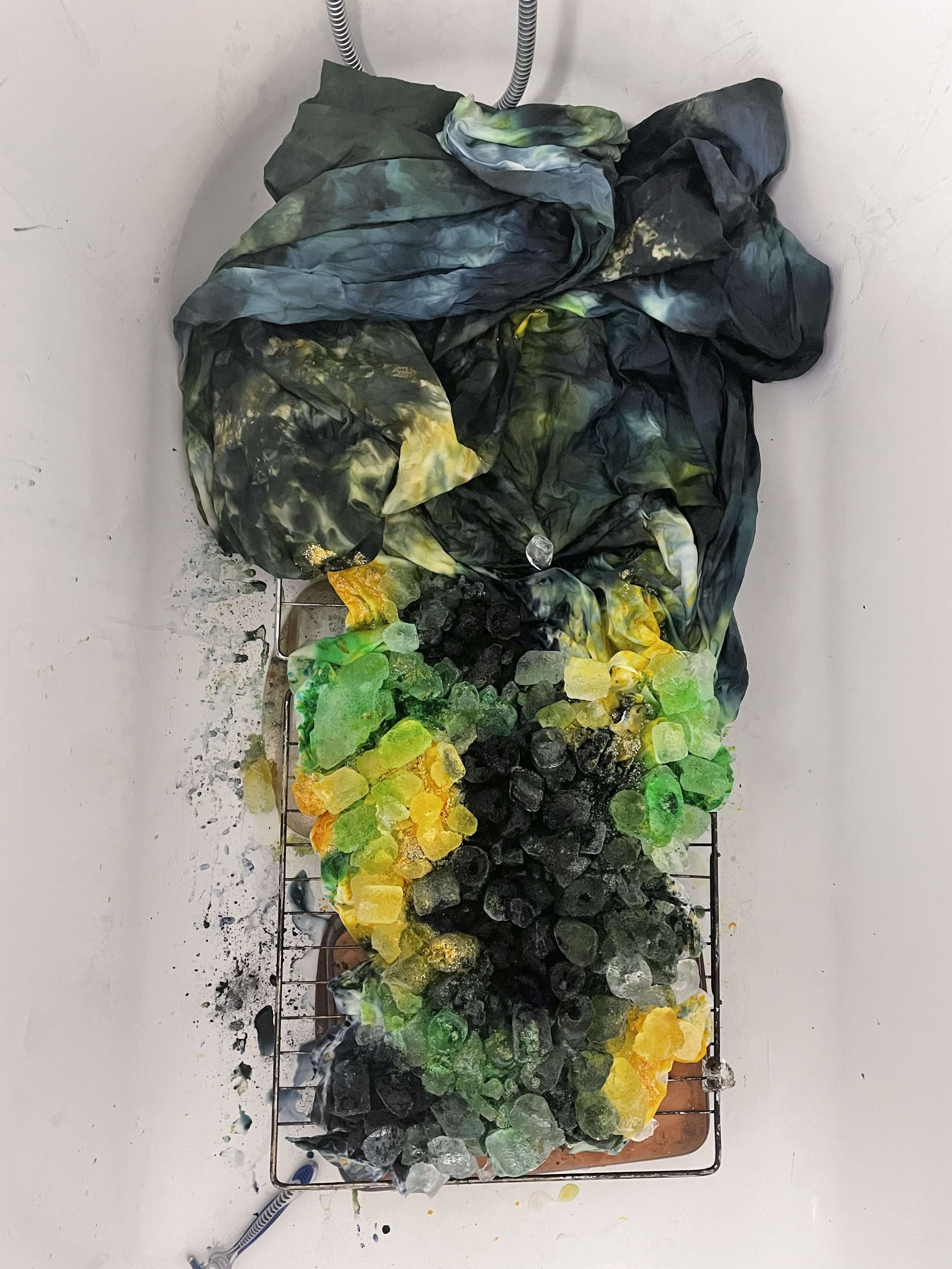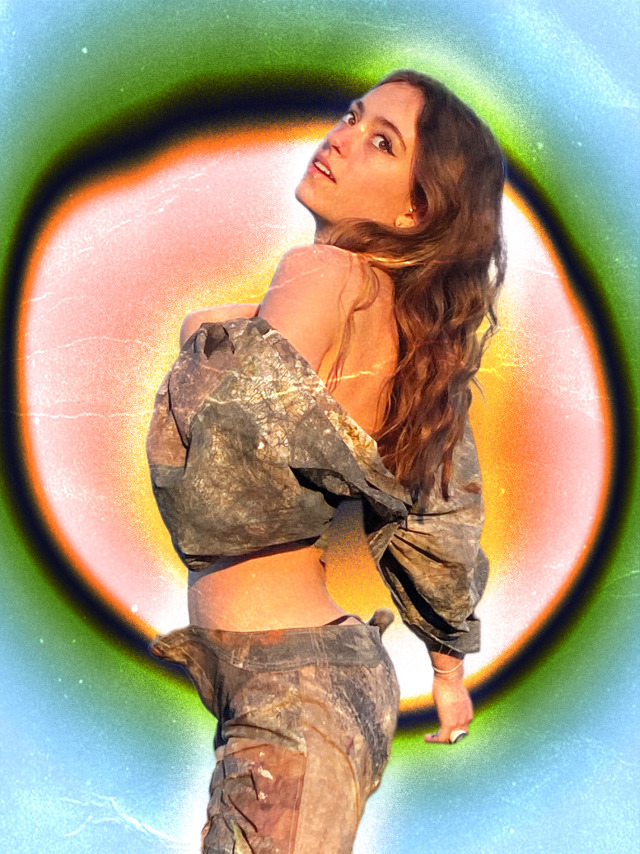
Interview with Fashion Textile Designer Joseph Bradshaw
Joseph Bradshaw, a Fashion Textiles student at West Suffolk College, caught the Editors eye with their avant-garde and apocalyptic-themed garments. We caught up with Joseph after their end of year show…
O.M: Hello Joseph! Thank you speaking with us! We would love to know who or what has inspired your recent collections? and in what way do they influence your thought processes when you create your collections?
Joseph Bradshaw: Hello both! I instinctively look to Alexander McQueen for inspiration, he’s someone I’ve always admired and looked up to, the way he combined drama and performance with jaw dropping craftsmanship is something I really admire, and aim to reflect in my own work. Along with this, spending a lot of time on the internet, seeing what amazing designers across the world come up with is also a great way to generate my own ideas, I was very inspired by the industrial, apocalyptic style that Im seeing everywhere right now for my end of year project. Creating a bank of imagery I love that I can dip into for inspiration really helps connect my own personal style to what I make, which keeps me motivated on whatever I’m working on.
O.M: How was the process for you in creating your collections? Were there any hurdles you had to overcome and if so, how did you get through them?
J.B: I’m a perfectionist who doesn’t have a natural talent at time management, so I do often find myself in very stressful situations where I have to complete a huge amount of work in very little time. All my final pieces I’ve made so far I’ve had to scale back and compromise on, for example my alien wedding dress was meant to be covered with beads from head to toe, with the ice dye design almost acting as a guide for what colour bead went where, but looking back I would have NEVER had the time to complete that, it would have been a nightmare!
I used to have a very strong idea of what my final piece would be right at the beginning of a project, so I was very reluctant to experiment or change my ideas, but I’ve now learned to go with the flow and allow my designs to change as a project progresses, which definitely helps produce a much more thought out, well rounded outcome. I often set myself more work than many would say I can realistically achieve, but I would also never want to change this, challenging myself is what I love most about fashion design.
O.M: We were truly intrigued by the way you create your garments. Can you tell us a little more about your creative process? When we met you, your mother mentioned about missing grills, ice and not using the bath…

She was talking about ice dyeing! Usually you’d just need a large bucket to ice dye fabric, but as I was needing around 6 metres of dyed fabric, I had to steal the bath for a few days, which my mum definitely wasn’t happy about. I’ve used ice dying for two of my projects, as it’s a great way of dying a huge amount of fabric very quickly with an intricate, mottled pattern that comes out different every time.
I basically use the grills from the oven and raise them up in my bath using books, so my fabric doesn’t sit in excess water and dye. I then scrunch my fabric on top of this, concertinaing it until it fits perfect. After pouring a layer of ice over this until no fabric is visible, I sprinkle lots of different coloured powered dye all over the ice and leave it to melt completely which can take 1 to 2 days.
After everything has melted I’m left with an amazing fabric design! Very easy for the incredible outcome. Other than this technique, each process for my final pieces are completely different, one of my favourite techniques I’ve used is flour resist dying, which involves painting a layer of flour + water mixture onto fabric, letting it dry, and then painting dye over it’s cracked surface, which leaves a thin, vein like network of lines all over your fabric. I used this for my end of year project in year 1 of college where my theme was ‘Metamorphosis’ which was great for emulating a second skin / chrysalis effect. I love finding new and unusual ways to transform fabric, and these techniques often become the foundations that I build my ideas and designs for that project off of.
Vimeo Link - Joesph’s BTS Work
O.M: Is there anything you would change about your collection? If so, how do you envision your collection moving forward?
J.B: Definitely! I’m never 100% satisfied with my work, as I said before I’m a perfectionist, I have to forcibly stop myself from tweaking and changing my garments till they look how I envisioned them, it’s very much a blessing and a curse. I think if I were to change one thing, it would be variety, due to time limitations I chose to recycle a silhouette I had already used which was an off the shoulder bodice paired with trousers, and although the two designs couldn’t be more different, I wish I had been given the time to give it its own more unique look.
Looking to the future, I’m aiming to constantly elevate my skills as a designer, and make each garment I make better than the last. I really want to learn more about tailoring, and the professional construction of a garment, as so far I’ve kind of just felt my way through the construction process. I’m obviously much more focused on womenswear, but in the future experimenting with making menswear is also something I would definitely be interested in doing.
O.M: and finally, what advice would you give to fellow students who are about to advance onto different paths and journeys?
J.B: I think my advice would probably just be to trust your gut and follow your instincts, no one knows what you truly want except you, so if you feel like you should be somewhere that will help you reach your goal, definitely act on that feeling!
Fashion Portfolio: Joseph





